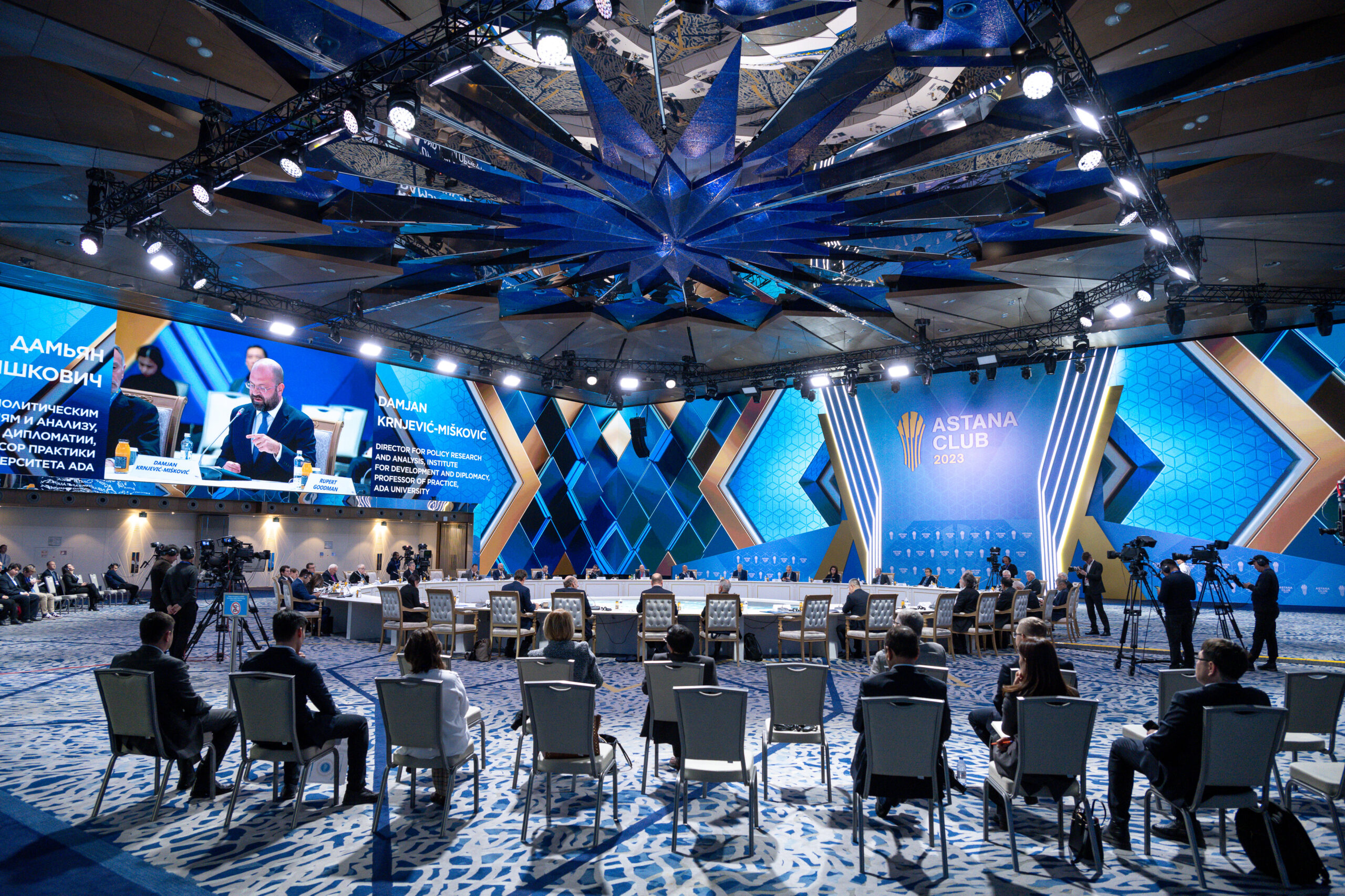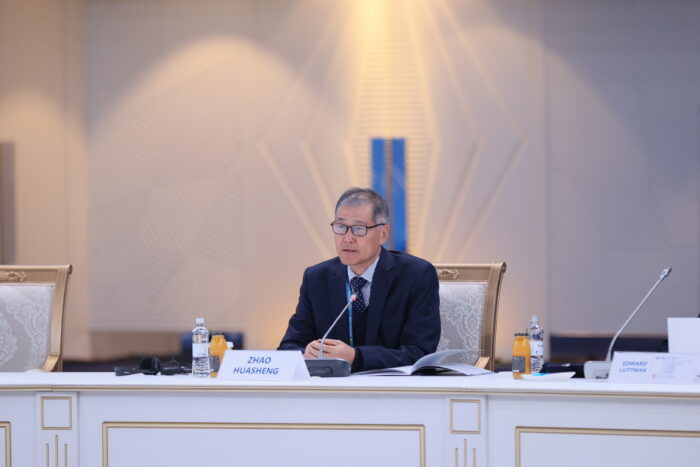ASTANA – The seventh meeting of the Astana Club international platform kicked off in Astana on Dec. 11. The two-day program covers eight thematic panel sessions, including discussions on Central Asia’s greater integration and emerging prospects for regional development.

The seventh meeting of the Astana Club international platform in Astana. Photo credit: Astana Club.
The meeting on Central Asia’s future was moderated by Damjan Krnjevic Miskovic, the director for policy research, analysis, and publications at the Institute for Development and Diplomacy (IDD), who is also a professor of practice at Azerbaijan Diplomatic Academy (ADA) University. He called the participants to view the Central Asian region in “a broader political context.”
Speaking about the unaccomplished Eurasian economic integration, Johannes Linn, a nonresident senior fellow at the Brookings Institution’s Global Economy and Development program, said it was “a dream until 2010 with a hope to create a single space.”
“After that, land routes between Europe and China began to develop. Located between the two sides, Central Asia began to benefit largely due to the growing interconnectedness between the West and the East,” said Linn.

Zhao Huasheng, professor of the Center for Russian and Central Asian Studies at Fudan University in Shanghai. Photo credit: Astana Club.
Linn underscored Central Asia’s contribution to the development of the International North–South Transport Corridor (INSTC).
“The growth of INSTC involves Central Asia, for example, the projects on the supply of electricity to Pakistan and further to India, as well as the construction of a gas pipeline from Turkmenistan to Asia,” he noted.
The Central Asia-South Asia Electricity Transmission and Trade (CASA-1000) project demonstrates landmark cooperation established by the Kyrgyz Republic, Tajikistan, Pakistan, and Afghanistan. It serves as a critical step towards deepening regional energy cooperation and developing stronger prospects for cross-border electricity trade.
Linn also raised the importance of water management between Afghanistan and Central Asia. The government of Afghanistan is constructing the Qosh Tepa Canal in the country’s northern part, diverting water from the Amu Darya River, the largest water resource both for Central Asia and Afghanistan. Every year, the water supply issue for agricultural needs in Central Asia is becoming more tense and less predictable.
Ashok Sajjanhar, a research fellow at the Observer Research Foundation and president of the Institute of Global Studies in New Delhi, said that “the most important change that has happened is the Russian-Ukrainian crisis.”
“Sanctions imposed on Russia increased the importance of fossil fuels, oil and gas resources in Kazakhstan, Uzbekistan, and Turkmenistan,” he said.
In this regard, Sajjanhar emphasized the intensification of dialogues between Central Asia and Europe on the transit of energy resources. The Trans-Caspian International Transport Route (TITR) or the so-called Middle Corridor, he noted, also “increases the relevance of the C5+1 summit format.”
In 2022, Middle Corridor has expanded the geography of its route by including three more countries – Singapore, Lithuania, and Bulgaria. It includes 11 country members and 25 transport and logistics companies so far.
“Central Asia is a continental bridge for China and Europe,” according to Zhao Huasheng, professor of the Center for Russian and Central Asian Studies at Fudan University in Shanghai.
He added that China is now promoting the construction of new railways with Kazakhstan, Kyrgyzstan, and Uzbekistan.
In the first six months of this year, Kazakhstan shipped 8.3 million tons of cargo to China by rail, that is 37% more than in the same period last year.
This year, an annually held event gathered over 40 top experts, government officials, and representatives of leading think tanks, particularly from Belgium, China, India, Russia, South Korea, Spain, the United Kingdom, the United States, and Türkiye.


